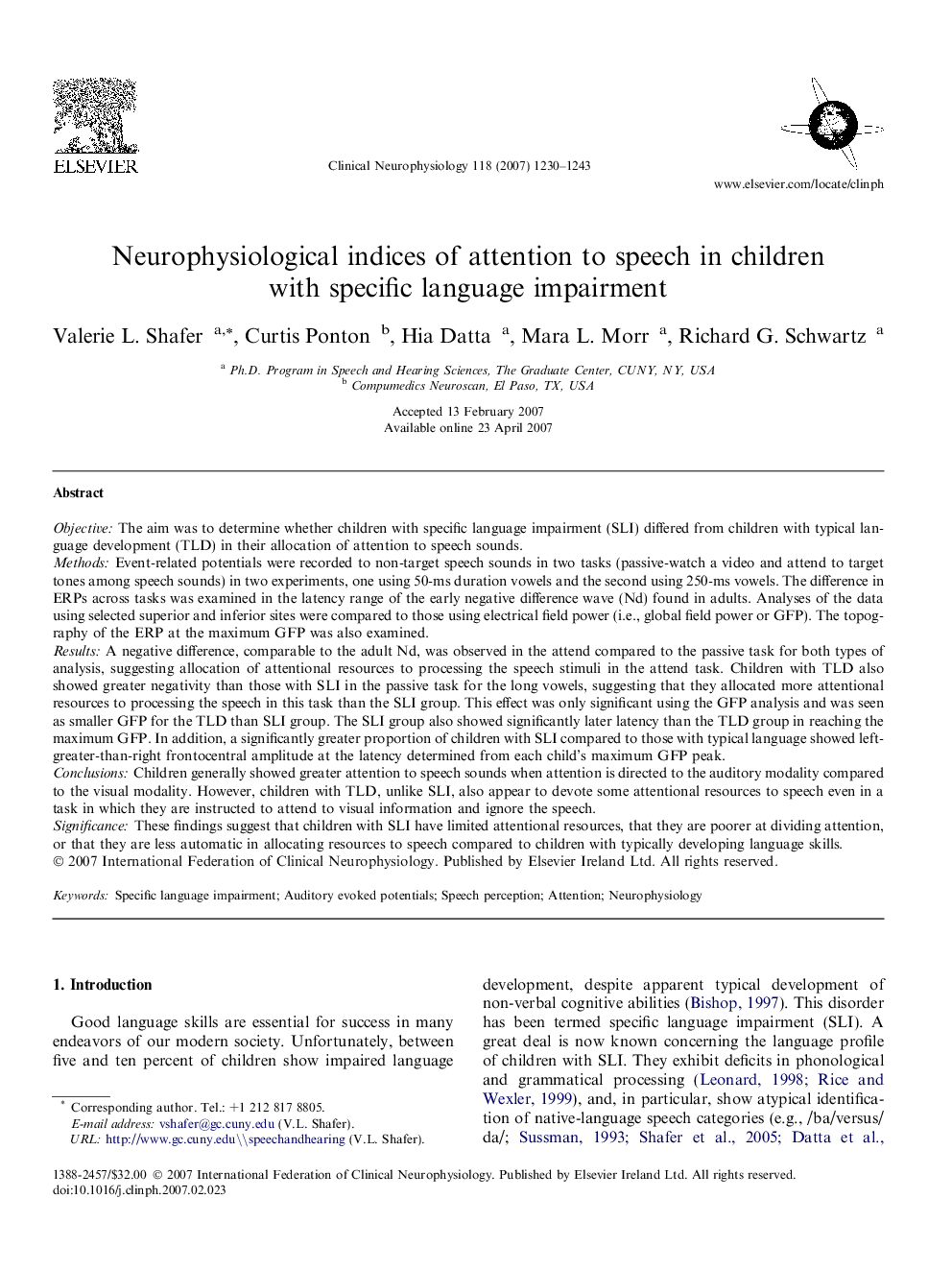| Article ID | Journal | Published Year | Pages | File Type |
|---|---|---|---|---|
| 3047699 | Clinical Neurophysiology | 2007 | 14 Pages |
ObjectiveThe aim was to determine whether children with specific language impairment (SLI) differed from children with typical language development (TLD) in their allocation of attention to speech sounds.MethodsEvent-related potentials were recorded to non-target speech sounds in two tasks (passive-watch a video and attend to target tones among speech sounds) in two experiments, one using 50-ms duration vowels and the second using 250-ms vowels. The difference in ERPs across tasks was examined in the latency range of the early negative difference wave (Nd) found in adults. Analyses of the data using selected superior and inferior sites were compared to those using electrical field power (i.e., global field power or GFP). The topography of the ERP at the maximum GFP was also examined.ResultsA negative difference, comparable to the adult Nd, was observed in the attend compared to the passive task for both types of analysis, suggesting allocation of attentional resources to processing the speech stimuli in the attend task. Children with TLD also showed greater negativity than those with SLI in the passive task for the long vowels, suggesting that they allocated more attentional resources to processing the speech in this task than the SLI group. This effect was only significant using the GFP analysis and was seen as smaller GFP for the TLD than SLI group. The SLI group also showed significantly later latency than the TLD group in reaching the maximum GFP. In addition, a significantly greater proportion of children with SLI compared to those with typical language showed left-greater-than-right frontocentral amplitude at the latency determined from each child’s maximum GFP peak.ConclusionsChildren generally showed greater attention to speech sounds when attention is directed to the auditory modality compared to the visual modality. However, children with TLD, unlike SLI, also appear to devote some attentional resources to speech even in a task in which they are instructed to attend to visual information and ignore the speech.SignificanceThese findings suggest that children with SLI have limited attentional resources, that they are poorer at dividing attention, or that they are less automatic in allocating resources to speech compared to children with typically developing language skills.
